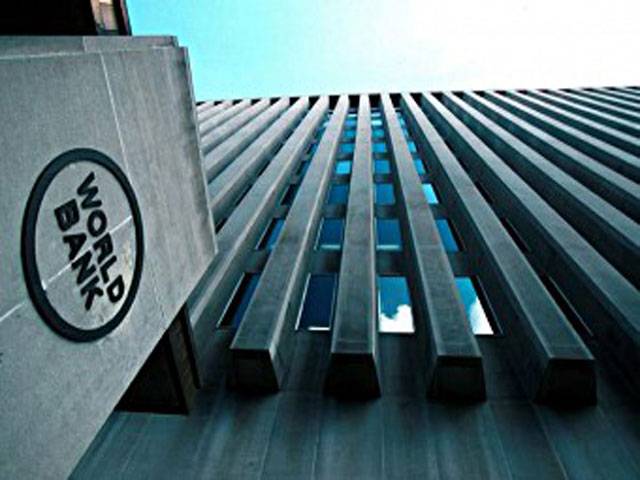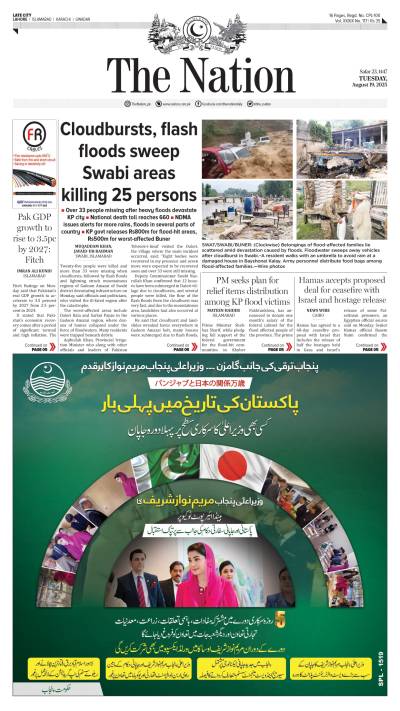ISLAMABAD - Although Pakistan has achieved nine years highest growth of 5.2 percent, but a number of warning signs are emerging including slower growth in revenues, growing budget and current account deficits, continuous fall in exports and investment, the World Bank (WB) noted on Saturday.
“Pakistan’s Gross Domestic Product growth in Fiscal Year2017 is expected to climb to 5.2 percent - the highest in nine years - and the growth rate will continue to accelerate, reaching 5.5 percent in FY18 and 5.8 percent in FY19,” said the WB’s latest report ‘Pakistan Development Update’. Pakistan’s economy continues to grow strongly, emerging as one of the top performers in South Asia.
The WB also mentioned a number of warning signs, which are emerging. Revenue growth is slowing, with the fiscal deficit growing for the first time in three years. Exports continue to fall as imports grow, substantially increasing the current account deficit. Investment rates - already low - fell further in FY16. Finally, the energy sector circular debt has resurfaced. “These emerging concerns suggest that renewed policy emphasis is required on macroeconomic stability to prevent the country from losing the impressive gains achieved over the past four years and other structural reforms such as those required in the energy sector”, the bank recommended.
“There are significant downside risks to the projected outlook. Pakistan remains vulnerable to domestic and external shocks. Domestically, the country is exposed to natural disasters, political events and terrorism. The recent issue of Panama papers has enhanced political risks and created some policy uncertainty. The upcoming national election in 2018 may affect reform momentum and macroeconomic policy orientation. Slower progress in much-needed structural reforms would weaken growth prospects and discourage private investment,” stated the report.
Very soon after the country successfully completed the IMF EFF (extended fund facility) programme, Pakistan has seen a weakening of several of the macroeconomic indicators that improved under the programme. The country’s fiscal balance is a key example. After falling significantly over the past three years, Pakistan’s consolidated fiscal deficit increased to 2.4 percent of GDP in the first half (July-December) of the FY17, 0.6 of a percentage point higher than in the same period last year. This was largely due to weakening growth in federal tax revenues and a significant contraction in federal non-tax revenues. Consolidated expenditure increased by 11 percent, albeit largely in growth-enhancing development spending, while total revenue fell by 0.7 percent. This represents a significant reversal of the federal government’s consistent fiscal consolidation effort.
The current account deficit widened in the first nine months of FY17 after exports declined by 1.2 percent and imports increased by 14.2 percent compared with the same period in FY16. The decline in exports, which continues a downward trend that began in FY15, was largely driven by textiles, which comprise 59 percent of total exports. Structural bottlenecks within Pakistan combined with low growth in destination markets resulted in weakened textile exports at both the high and low ends of the value chain.
The significant trade deficit was partially offset by remittances. Remittances, which are historically a major source of import financing, are also starting to taper off, declining for the first time in over a decade. This was largely driven by deteriorating economic conditions in GCC countries, which account for almost two-thirds of Pakistan’s remittances. Remittances from GCC countries fell by 4.5 percent in July-March FY17. The overall balance recorded a deficit of $1.1 billion during July-March FY17 compared to a surplus of $1.5 billion in the same period in FY16. Consequently, Pakistan’s official reserves fell from a high of $18.1 billion in June 2016 to $16.5 billion by the end of March 2017, equating to only 3.6 months of goods and services.
Inflation has been picking up momentum recently and reached 4.8 percent in April 2017 year-on-year. In the financial sector, private sector credit has grown by 8.6 percent during H1FY17, mostly driven by the textiles sector, although loans are evenly distributed across working capital, fixed investment and trade finance. Bank profitability is weakening in a low interest rate environment and as government debt declines, but remains healthy.
“Pakistan’s accelerating growth is good news and reflects the country’s success in building confidence. But the pace of reforms has slowed and it is important for the structural reforms to accelerate,” said Illango Patchamuthu, World Bank Country Director for Pakistan.
“Since the 18th Constitutional Amendment, many important reform areas are now shared responsibility. Provinces have a significant role to play in fiscal consolidation, energy sector reforms and business environment, not to mention their role in delivering high quality health and education services,” said Muhammad Waheed, World Bank Senior Economist for Pakistan. “Effective collaboration between federal and provincial governments will be crucial if Pakistan has to deliver on its growth potential,” he added.
The report discusses a number of challenges that the provincial governments are facing. Using Punjab as an example, it is highlighted that while provincial own-source revenues have significantly increased in recent years, there could have been further significant gains, if tax policy and administration reforms were implemented.
The World Bank also highlights the importance of the skilling of the youth bulge for better jobs. The Punjab government is putting in efforts to significantly increase the scale of technical and vocational training programmes in an attempt to boost job prospects for the province’s ‘youth bulge’. Several next steps in this area are identified in the report including the application of quality standards and the introduction of initiatives to improve matching between jobseekers and prospective employers.








